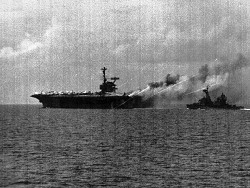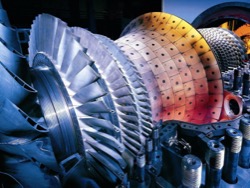
In connection with neponyatki of the people at detonation engines, he decided a little snarky in simple language, purely from itself, and even without reference to authority.
Detonation are the engines in the normal mode, which uses detonation combustion of fuel. The engine itself can be (in theory) any , — engine, jet, Yes, though steam. Theoretically. However, to date all known commercially acceptable engines such regimes of combustion of fuel in the common people called “explosion” is not used because of their … m-m-m…. the commercial unacceptability..
What does the use of detonation combustion in the engines? Greatly simplifying and generalizing, similar to the following:
1.Replacement of conventional combustion knock due to the features of the gas dynamics of the shock front increases the theoretical maximum achievable combustion efficiency of the mixture, which allows to increase engine efficiency and reduce consumption by about 5-20%. This is true for all types of engines, as internal combustion engines, and rocket.
2. The speed of the combustion portion of the fuel mixture increases by about 10-100 times, so it is theoretically possible for the internal combustion engine to increase the liter capacity (or specific thrust per kg of mass for jet engines) is about the same amount of time. This factor is also relevant for all types of engines.
3. The factor is relevant only for jet engines of all types: because the combustion processes are in the combustion chamber at supersonic speeds, and temperature and pressure in the combustion chamber increases significantly, then there is a great theoretical possibility repeatedly to increase the speed of the outflow jet from the nozzle. Which in turn leads to a proportional increase thrust, specific impulse, efficiency, and/or reduction of the weight of the engine and required fuel.
All these factors are extremely important, but are not revolutionary, evolutionary. The revolutionary are the fourth and fifth factors, and they apply only to jets:
4. Only the use of detonation technology allows you to create flow (and, hence, on atmospheric oxidant!) universal jet engine of an acceptable weight, size and thrust, for practical and large-scale development of a range of pre-, super-, and hypersonic speeds 0-20Мах.
5.Only detonation technologies allow to squeeze out of chemical rocket engines (on a couple fuel-oxidant) rate parameters required for their use in interplanetary flights.
P. 4 and 5. theoretically reveal a) a cheap way to near-space, and b)the way for manned launches to the nearest planets, without having to do a monstrous super-heavy launch vehicles ground over3500tonnes.
Disadvantages detonation engine derived from their advantages:
1. The rate of combustion is so high that most of these engines can make work only in cycles: intake-combustion-exhaust. That at least three times reduces the maximum achievable liter capacity and/or traction, sometimes depriving the whole idea.
2. Temperature, pressure and speed of their rise in the combustion chamber detonation engine are such that exclude the direct application of most known materials. They’re all too weak to build a simple, cheap and effective engine. You either need a whole family of new materials or the use of yet unprocessed design tweaks. Materials we have, and the complexity of the design again, often defeats its own purpose.
However, there is an area in which no detonation engines can not do. It is economically feasible atmospheric hypersonic range of speeds from 2 to 20 Max. So the battle goes in three directions:
1. Diagram generation engine with continuous detonation in the combustion chamber. That requires supercomputers and non-trivial theoretical approaches to calculate their hemodynamics. In this area damned quilted jackets as always took the lead, and for the first time in the world, showed theoretically that a continuous delegation at all possible. Invention, discovery, patent, — the works. And began to manufacture practical design of rusty pipes and kerosene.
2. The creation of constructive solutions to enable the application of classic materials. Damned quilted jackets with a drunken bear and then the first to come up with a laboratory multi-chamber engine, which is already working indefinitely. As the thrust of the engine Su27 and weight such that it holds 1 (one!) grandpa. But since the vodka was counterfeit, the engine is turned while pulsing. But the bastard works so pure that it can even include the kitchen (where the quilted jacket, it actually ripped in between vodka and balalaika)
3. Create supermaterials for future engines. This area is extremely tight and most secret. Breakthroughs in information I have.
Based on vysheozvuchennoy consider the prospects of detonation, piston engine. As is known, the pressure increase in the combustion chamber of classic proportions, when the knock in the engine is faster than the speed of sound. Remaining in the same form factor, there is no way to force the mechanical plunger, and even with significant associated mass, to move in the cylinder with approximately the same speed. GRM classic layout also can’t work at such speeds. So a direct remake of the classic internal combustion engine to detonation from a practical point of view, meaningless. Need to re-develop the engine. But as soon as we begin to engage, it turns out that the piston in this design is just an extra detail. So IMHO, the piston knock of internal combustion engines is an anachronism
Author: Homo 2.0






